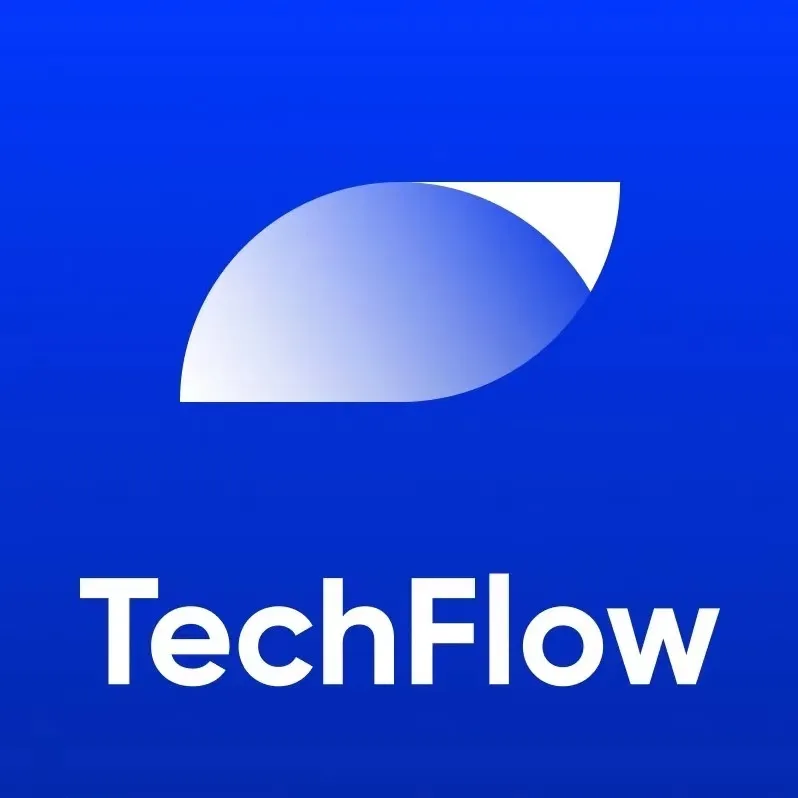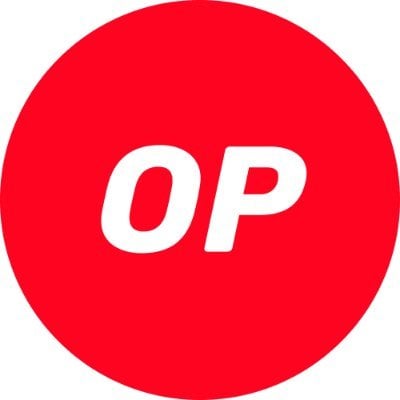In-depth RaaS: Overview of Rollup Service Model and Profitability Methods
Original Title: 《RaaS: The Key Ingredient to a Rollup-Centric Roadmap》
Author: Myles O'Neil
Compiled by: Shenchao TechFlow
Introduction
One type of company we have been closely monitoring is Rollup-as-a-Service providers ("RaaS"). Simply put, RaaS providers help application developers launch Rollups quickly by selling "ready-made" products such as sorting, indexing, and analytics.
In this article, we will quickly outline the products sold by RaaS providers, how they differentiate themselves, how they make a profit, and share some of our internal insights on the RaaS business.
RaaS Services/Products Offered
While RaaS services/products are still in their infancy, we have noticed that most RaaS providers sell similar bundled services and products. Through conversations with RaaS founders, I learned that this bundled service roughly includes the following.
Services
Similar to the scripts used by traditional B2B companies, RaaS providers typically start by selling services (Note: Surprisingly, the traditional "service to product" strategy is very effective in the cryptocurrency space).
As part of the service offering, RaaS providers often act as technical consultants, helping you assess the Rollup stack (e.g., OP Stack, Arbitrum Orbit) and decide which stack is best suited for your application.
This service is highly valuable and deserves detailed discussion. The primary customers of RaaS providers are startups looking to launch applications on their dedicated Rollups. For them, the most important thing is to build applications and grow their user base; spending months of development time to familiarize themselves with the Rollup framework is not something they want to do, nor should they. Since the entire business of RaaS providers is based on understanding the Rollup framework and building developer tools around it, they are fully capable of helping startups evaluate the available framework options.
For example, they can help startups answer questions such as: What are the trade-offs between different frameworks and DA layers? Is there any customization that can improve the application of the Rollup? What are the trade-offs of increased customization (e.g., increased complexity of integration)? By providing guidance based on experiences with actual clients, they can save application teams months of development time.
Infrastructure Products
Sorters: Running a sorter is a high-risk job—if the sorter has issues, your Rollup will be unusable, leading to significant user dissatisfaction. RaaS providers offer high-reliability managed sorting services through redundancy measures. If your sorter encounters problems, they can ensure a quick failover process so that your Rollup can continue running, minimizing downtime. Additionally, you will need to pay for Layer 1 DA costs, and the offsetting sorter fees will accumulate on your Rollup. For smart contract Rollups on Ethereum, a 7-day withdrawal period means you always need at least a week’s worth of ETH to cover DA costs. RaaS providers can help you manage these complexities, with some even providing the liquidity needed for DA costs on Layer 1.
RPC: Unreliable RPC endpoints can also lead to poor user experiences, as we saw in the Optimism and Arbitrum airdrops. If users transact, perform large queries, or call contracts through your RPC node, RaaS providers can ensure that new nodes are automatically spun up to meet demand.
Developer Tools
Internal Tools: Since RaaS clients are both Rollup operators and application operators, they have access to secure infrastructure that helps them protect the multi-signature keys used for implementing software upgrades. Some providers also offer dashboards for viewing analytics, activity monitoring, and alerts to notify you when issues arise.
Other Tools: It’s difficult to cover everything in this category, but at the very least, Rollup operators need data indexing tools to query on-chain information, standardized interfaces to perform operations such as token minting and burning or other transactions, and access to off-chain oracles.
User Interface Tools: At a minimum, Rollup users will need a way to bridge to your Rollup, multiple wallet options (including account abstraction infrastructure), and a blockchain explorer that matches Layer 1 applications.
RaaS GTM Strategy
Currently, there are at least six RaaS providers in the market, all competing for startups (to a large extent). We observe that RaaS providers typically adopt three GTM approaches to differentiate their products.
Vertical Integration (e.g., Eclipse)
Since Rollup frameworks and RaaS sales are related and tightly coupled products, vertical integration is a natural choice. Beyond economic incentives, there are strategic reasons for RaaS operators and frameworks to pursue vertically integrated products.
From the framework's perspective, RaaS products can bring them closer to customers. Through this proximity, they can create a tighter feedback loop to guide product decisions. There may even be an intentional extension of RaaS support to third-party frameworks, introducing best components to deliver products.
Like any emerging and highly competitive technology category, a significant challenge faced by Rollup frameworks is finding a profitable strategy that does not hinder adoption. RaaS products are the most direct way to achieve both goals. RaaS solutions can facilitate the adoption of frameworks by addressing significant pain points. At the same time, the selectivity of RaaS allows you to achieve profitability in a way that does not burden customers who choose to operate their own Rollups.
The main challenge of this approach is resource constraints. Building a RaaS business in parallel with building a Rollup framework may exceed your capabilities.
Collaborating with Frameworks (e.g., Conduit)
RaaS providers that collaborate with specific frameworks (such as OP or Arbitrum) bind themselves to that framework. By aligning with existing frameworks, RaaS providers can gain significant distribution advantages.
For example, by partnering with Optimism, Conduit has become the default option for startups choosing Optimism as their framework, leveraging Optimism's brand. Other providers (like Slush) are aligning with emerging Rollup frameworks (like Starknet) to gain distribution advantages in another ecosystem.
Besides enhancing distribution capabilities, this approach allows you to focus all resources on building a truly excellent product. Consider a recent case study where Aevo switched its RaaS solution to Conduit. They did this because Conduit was running the latest version of Optimism, which greatly improved their product. By focusing on a single framework, Conduit can ensure that customers are always running on the latest version of the codebase.
The downside is that a single framework is unlikely to support all use cases, so you may somewhat limit the market (at least until you expand to support other frameworks).
Framework-Agnostic (e.g., Caldera)
Framework-agnostic RaaS providers support RaaS products and services for various Rollup frameworks (such as OP, Arbitrum).
If a framework-agnostic provider can become the first point of contact for startups, you can see that the underlying framework may simply be a technical choice facilitating various use cases, rather than a signal of brand alignment.
The framework-agnostic approach allows RaaS providers to offer more choices to customers during onboarding. By running multiple frameworks in production, they can see which components are most valuable and incorporate those lessons into the guidance provided to new customers.
Similar to the vertical integration approach, the challenges of this approach are primarily related to resource constraints. Each framework requires significant investment to support, and trying to support too many frameworks may lead to immature products.
RaaS Business Model
Currently, it appears that RaaS providers have two revenue sources: (i) sorting fees and (ii) infrastructure and tools. Based on our observations, the service component is typically offered for free.
Sorting Fees
RaaS providers run sorters to sort transactions for applications. In return, they charge a fee.
We see two ways RaaS providers charge sorting fees: one is to take a revenue share, where applications share a percentage of the revenue paid by end users for transaction fees; the other is to charge a simple monthly SaaS fee for hosting the sorter.
The fee dynamics is an interesting issue, so let’s briefly discuss it. For RaaS providers, running sorters has fixed costs and variable costs that change with the number of transactions. As mentioned above, some providers also take on the risk of providing DA costs on Ethereum on behalf of their clients. Ideally, as a RaaS provider, you can charge a monthly SaaS fee to cover fixed operating costs while also taking a revenue share to cover variable costs and benefit from rapidly growing applications. The latter is very important—if you cannot benefit from your clients' growth, the economics of operating a sorting product will not be favorable. If you have capital, it becomes easier to justify this revenue-sharing component to provide those DA costs on behalf of clients.
However, whether RaaS providers can charge revenue shares in a steady state will depend on the pricing power of applications over RaaS providers. Currently, it is too early to determine who holds pricing power. (If we had to say, similar to how the payment industry operates, our feeling is that large applications will have pricing power over RaaS providers, while smaller applications will not).
Infrastructure, Tools, and Others
RaaS providers can charge SaaS fees for various critical infrastructure services. By having customer relationships, they are better positioned than existing providers to capture the highest value services and offer bundled discounts (for example, using our RPC service instead of Alchemy's, we will provide discounts on other services). Additionally, RaaS providers may have cost advantages over existing providers because their architecture allows them to easily scale to support new chains.
Due to resource constraints, RaaS providers often need to partner with external companies to meet all their clients' needs. For example, Conduit recently launched its integration program, and Caldera has also announced many similar partnerships. As a distribution channel for these partners, RaaS is well-positioned to build a marketplace or resale business model, very similar to AWS and its third-party "plugins."
Other Thoughts
There are several things I want to discuss that don't fit well in the earlier chapters, so I decided to put them all in this catch-all section.
RaaS and Frameworks
While RaaS providers and frameworks currently have a relatively friendly relationship, I believe they will inevitably compete, especially for the sorting market. If competition intensifies, I think RaaS providers are most likely to benefit. Here are some reasons:
- As we have already begun to see, most of these startups are directly turning to RaaS providers to outsource the complexities of deploying Rollups. If this trend continues, RaaS providers will have the top sales channels and thus customer relationships. If things indeed develop this way, RaaS providers may view the underlying framework merely as a technical choice facilitating various use cases.
However, frameworks also have the potential to counter RaaS providers. In this regard, here are some questions we discussed:
Can frameworks charge applications for using their frameworks? (While the network effects of framework adoption are very strong, I think it is difficult to achieve profitability by relying solely on the framework itself. However, this remains an interesting question worth pondering).
Each framework supported by RaaS providers requires them to invest significant resources (primarily development time). At this point, a RaaS provider is unlikely to support every framework in the market and design custom products for them. So, can frameworks compete with RaaS providers by offering key services that address the unique pain points of their stacks? For example, a ZK Rollup framework could provide better pricing for proofs by aggregating demand from Rollups and routing it to a set of proving systems and operators.
Cross-Rollup MEV
The current consensus is that Rollups will have considerable MEV, and cross-Rollup MEV will become a honeypot. Based on this assumption, most believe that shared sorters are most likely to capture this value. I think this assumption remains a very open question, and I would even challenge the outcome of this assumption.
If cross-chain MEV does indeed become a significant component of the market, RaaS providers will have to decide whether to integrate with shared sorter partners or launch their own shared sorter products. Let’s assume that in the future, RaaS providers will run sorters for most new Rollups, and this service will account for a large portion of their revenue (and also provide a view of the memory pools of each Rollup using their service). In that case, I think RaaS providers are more likely to launch their own shared sorter products rather than collaborate with external vendors.
Furthermore, RaaS providers can leverage their observations of all these memory pools to offer order flow auctions and use their control over sorters to provide block-top auctions for settlement. This would allow seekers to view valuable transactions, fill them, and settle simultaneously on supported chains.
Conclusion
There are many other interesting questions about RaaS providers, but for the sake of brevity, we will stop here. One thing is clear to us: RaaS providers represent a very exciting business in the cryptocurrency space. This is an area we are closely monitoring.











